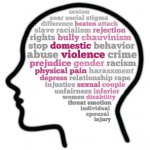On March 29, Brandon Elliot walked up to a 65-year-old Filipino American woman near Times Square and kicked her in the chest.
Footage from the security camera of a nearby luxury apartment building recorded the attack: Elliot shoved her to the ground, and then repeatedly kicked and stomped on her, while shouting, “You don’t belong here!”
For me, the most chilling part of the video was not the actual attack. It was the moments afterward. A delivery person who witnessed the attack alerted two members of the building staff. Rather than racing out, the staff’s first reaction was to move toward the entrance and shut the door.1
My mom lives about 10 blocks north of where the attack occurred. On a different day, that could have been my mother on her way to church being kicked in the chest as onlookers looked on and quietly shut the door.
I can’t tell you how disconcerting it is to watch one of the growing number of recordings of racial violence and see a victim who looks passably like a relative. Like a deep-fake video, your mind replaces the victim’s face with an image of your loved one. It’s the reason many have refused to watch the video taken by 18-year-old Darnella Frazier, who recorded George Floyd’s last breaths. Ms. Frazier herself noted, “When I look at George Floyd, I look at my dad. I look at my brothers. I look at my cousins, my uncles.”2
It took me a while to recognize the slow-burn reaction I was having to the viral clip. My colleagues, like your colleagues, largely fall into two types—those who volunteer to help out when there is need and those who wait for others to volunteer. Recently, this has been called the Shopping Cart Theory: Some people do the right thing—like putting away a shopping cart—even when they don’t stand to benefit, while others do not.3
Of late, my tolerance for the latter group has dropped precipitously. For example, when one of my fellows complained that he should not have to help a colleague, his argument did not receive the sympathetic hearing he was likely expecting. Despite my outward cynicism, I’ve always believed that in times of crisis, people will step up and do the right thing. Now, I’m not so sure.
This question is relevant to the Asian American and Pacific Islander (AAPI) community because violence against Asians is on the rise. The Stop AAPI Hate coalition notes that nearly 3,800 anti-Asian hate incidents occurred in the U.S. from March 2020 to February 2021.4 This likely represents only a fraction of the racially motivated attacks that actually occur.
Prosecutors are reluctant to classify many attacks as hate crimes because it can be difficult to prove intent, even when, for example, someone drives 30 minutes out of his way to kill women who work in Asian-owned businesses.5
During the pandemic, a 150% increase in anti-Asian American hate crimes has occurred.6 A recent Survey Monkey/AAPI Data Survey revealed the following:7


